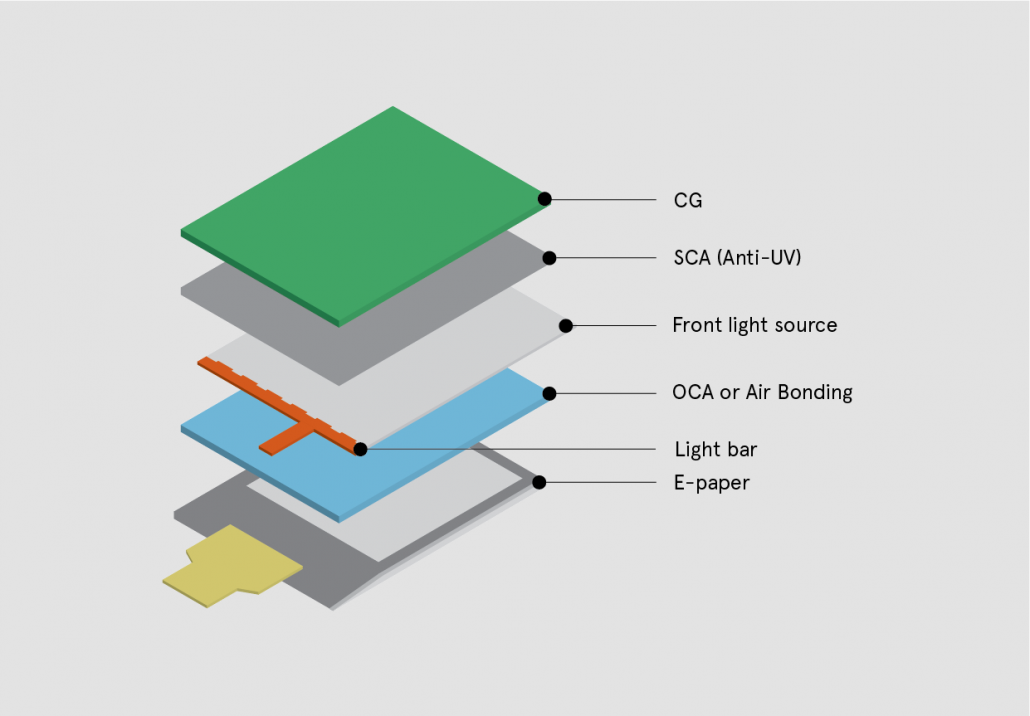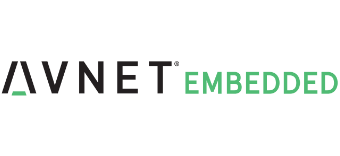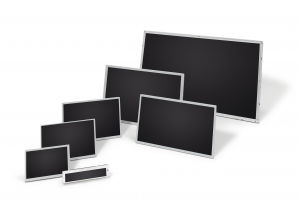Electronic paper (also known as e-ink, electrophoretic display, or electronic ink) is a kind of electronic display that mimics the appearance of ink on paper. An electronic paper display reflects ambient light like paper, unlike conventional flat panel displays that emit light.

Lightweight and slim, ePaper displays offer high-resolution and no glare visibility, allowing users to view text and pictures at any angle, giving them paper-like readability – even outdoors and in bright sunlight, without the need for a backlight. This makes it the perfect choice for both indoor and outdoor displays, such as retail shelf labels, interactive museum signs, traffic signs, notice boards and passenger information boards.
But outside of usability, they are predominantly known for their durability, reliability, high data storage and low power consumption. It can hold static text and images for an indefinite time without the use of electricity and will continue to display content even in a power outage. This is because it doesn’t require power to display an image, only to change the content. Equally, the response time of ePaper displays is slower when switching between screens. This too makes them more suited to static image displays.
Their displays will use approximately 3 mA for 2 seconds each time it updates its contents, giving full use of 36 mA or 0.012 mAh per day. Therefore, the display consumes only 0.008% of the power that a same-sized TFT LCD would require in a day and because there is no heat source, there is equally no heat dissipation. With the global focus on energy conservation, ePaper has a major advantage over traditional LCD screens and, as a result, the market demand is increasing.
Making ePaper smart
To make the ePaper smart, so that it can be used in ebooks, wearable electronics and others, it is necessary to add a PCAP.
The main challenge in optical bonding EPD and a PCAP is the very thin glass substrate. Excessive or uneven pressure applied during the bonding process can cause the glass to break. And the traditional liquid bonding may result in adhesive overflow, and the curing shrinkage of the adhesive can lead to mura issues.
To tackle these two pain points, we use solid OCA (silicone-based) for the optical bonding procedure. The pressure and debubbling pressure used in vacuum bonding are low, which, combined with our self-developed bonding fixtures, avoids excessive and uneven pressure. This also reduces the occurrence of stress-related mura. To increase weather-resistance, we can incorporate anti-UV designs into the structure to prevent the LCD yellowing or cracking.
Smart ePaper displays are well suited to plenty of Smart Cities applications, as well as Public Information Displays, digital signage, electronic billboards and transportation vehicles, among others.

Value-added features of ePaper displays
We offer a variety of value-added features tailored to different applications, as well as customized integration services:
- Ceramic printing on cover glass
- Optional cover glass features: Anti-Glare (AG), Anti-Reflective (AR), Anti-Fingerprint (AF), and Anti-Virus coatings
- Anti-UV design
- Integration of a front light guide with light sensors and PWM dimming capability
- Provision of ePaper driving boards, touch controllers, and backlight driving boards
Our PCAP technology stable against noise, water, humidity, thanks to the mutual differential technology and HW FFT to find the best low noise frequency.
Our experts are on hand to guide you in the creation of display or touch solutions that meet your requirements. Find out how Avnet Embedded can propel your product innovation and get in touch today.
Talk to the experts!
Let us know about your product or your challenge and our team will get in touch to discuss how we can help.




